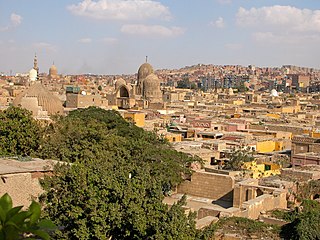- QV66, Queen Nefertari's tomb, Valley of the Queens, Luxor [2]
Afghanistan
- The Shrine of Baba Wali near Kandahar
- Abdur Rahman Khan's Mausoleum in Kabul
- Bagh-e Babur, mausolea of the founder of the Mughal Empire
This is a list of mausolea around the world.
Mausoleum of the Counts of Bossu, by Jacques du Broeucq. [1]
Iran's Cultural Heritage Organization lists several hundred mausoleums in Iran. (See Ferdowsi and Ziyarat articles for some examples).
| | This section is empty. You can help by adding to it. (August 2019) |

A mausoleum is an external free-standing building constructed as a monument enclosing the burial chamber of a deceased person or people. A mausoleum without the person's remains is called a cenotaph. A mausoleum may be considered a type of tomb, or the tomb may be considered to be within the mausoleum.

The Sanctuary of Imām 'Alī, also known as the Mosque of 'Alī, located in Najaf, Iraq, is a mausoleum which many Shia and Sunni Muslims believe contains the tomb of 'Alī ibn Abī Tālib, a cousin, son-in-law and companion of the Islamic prophet Muhammad. The Shī'as consider 'Alī as their first Imām and the first of the twelve caliphs of Muhammad, and the Sunnis regard him as the fourth Sunni Rashid Caliph. According to Shī'ite belief, buried next to 'Alī within this mosque are the remains of Adam and Nuh (Noah). Each year, millions of pilgrims visit the Shrine and pay tribute to Imām 'Alī.

A dargah is a shrine or tomb built over the grave of a revered religious figure, often a Sufi saint or dervish. Sufis often visit the shrine for ziyarat, a term associated with religious visitation and pilgrimages. Dargahs are often associated with Sufi eating and meeting rooms and hostels, called khanqah or hospices. They usually include a mosque, meeting rooms, Islamic religious schools (madrassas), residences for a teacher or caretaker, hospitals, and other buildings for community purposes.

The Shāh Abdol-Azīm Shrine, also known as Shabdolazim, located in Rey, Iran, contains the tomb of ‘Abdul ‘Adhīm ibn ‘Abdillāh al-Hasanī. Shah Abdol Azim was a fifth generation descendant of Hasan ibn ‘Alī and a companion of Muhammad al-Taqī. He was entombed here after his death in the 9th century.

Al-Rifa'i Mosque is located in Citadel Square, adjacent to the Cairo Citadel. Its name is derived from the Ali Abu Shubbak who is buried in the mosque. Now, it is also the royal mausoleum of Muhammad Ali's family. The building is located opposite the Mosque-Madrassa of Sultan Hassan, which dates from around 1361, and was architecturally conceived as a complement to the older structure as part of a vast campaign by the 19th century rulers of Egypt to both associate themselves with the perceived glory of earlier periods in Egypt's Islamic history and modernize the city.

The Qadiriyya are members of the Sunni Qadiri tariqa. The tariqa got its name from Abdul Qadir Gilani, who was a Hanbali scholar from Gilan, Iran. The order relies strongly upon adherence to the fundamentals of Sunni Islamic law.

An Iranian architect is traditionally called a mi'mar.

Shaykh Sharfuddin Bu Ali Shah Qalandar Panipati, renowned as Bu Ali Qalandar, born in Panipat, Haryana, India, was a Qalandar and Sufi saint of the Owaisī Order, who lived and taught in India. His shrine or dargah (mausoleum) is at Bu Ali Shah Qalandar Dargah, Panipat, which is a place of pilgrimage.

A mazār, also transliterated as mazaar, also known as marqad (مَرْقَد) or in the Maghreb as ḍarīḥ (ضَرِيْح), is a mausoleum or shrine in some places of the world, typically that of a saint or notable religious leader. Medieval Arabic texts may also use the words mašhad (مَشْهَد) or maqām to denote the same concept.
The city of Multan, Punjab, Pakistan has many mausoleums and shrines, due to its rich heritage of pirs and saints. Some of the best-known mausoleums that can still be visited today include the following.

The Imam Reza shrine, located in Mashhad, Iran, is an Islamic shrine containing the remains of Ali al-Rida, the eighth imam in Twelverism. It is the largest mosque in the world by area. Also contained within the complex are the Goharshad Mosque, a museum, a library, four seminaries, a cemetery, the Razavi University of Islamic Sciences, and other buildings.

The City of the Dead, or Cairo Necropolis, also referred to as theQarafa, is a series of vast Islamic-era necropolises and cemeteries in Cairo, Egypt. They extend to the north and to the south of the Cairo Citadel, below the Mokattam Hills and outside the historic city walls, covering an area roughly 4 miles (6.4 km) long. They are included in the UNESCO World Heritage Site of "Historic Cairo".

Wali Kirani was a Muslim saint. His date of birth and date of death are not known, but is believed to have lived around the time of Sultan Hussain Mirza's rule in Herat around 1470.

Persecution of Sufis over the course of centuries has included acts of religious discrimination, persecution, and violence both by Sunni and Shia Muslims, such as destruction of Sufi shrines, tombs and mosques, suppression of Sufi orders, murder, and terrorism against adherents of Sufism in a number of Muslim-majority countries. The Republic of Turkey banned all Sufi orders and abolished their institutions in 1925, after Sufis opposed the new secular order. The Islamic Republic of Iran has harassed Sufis, reportedly for their lack of support for the government doctrine of "governance of the jurist".

The Mashhad of Sayyida Ruqayya, sometimes referred to as the Mausoleum or Tomb of Sayyida Ruqayya, is a 12th-century Islamic religious shrine and mosque in Cairo, Egypt. It was erected in 1133 CE as a memorial to Ruqayya bint Ali, a member of the Islamic prophet Muhammad's family. It is also notable as one of the few and most important Fatimid-era mausoleums preserved in Cairo today.